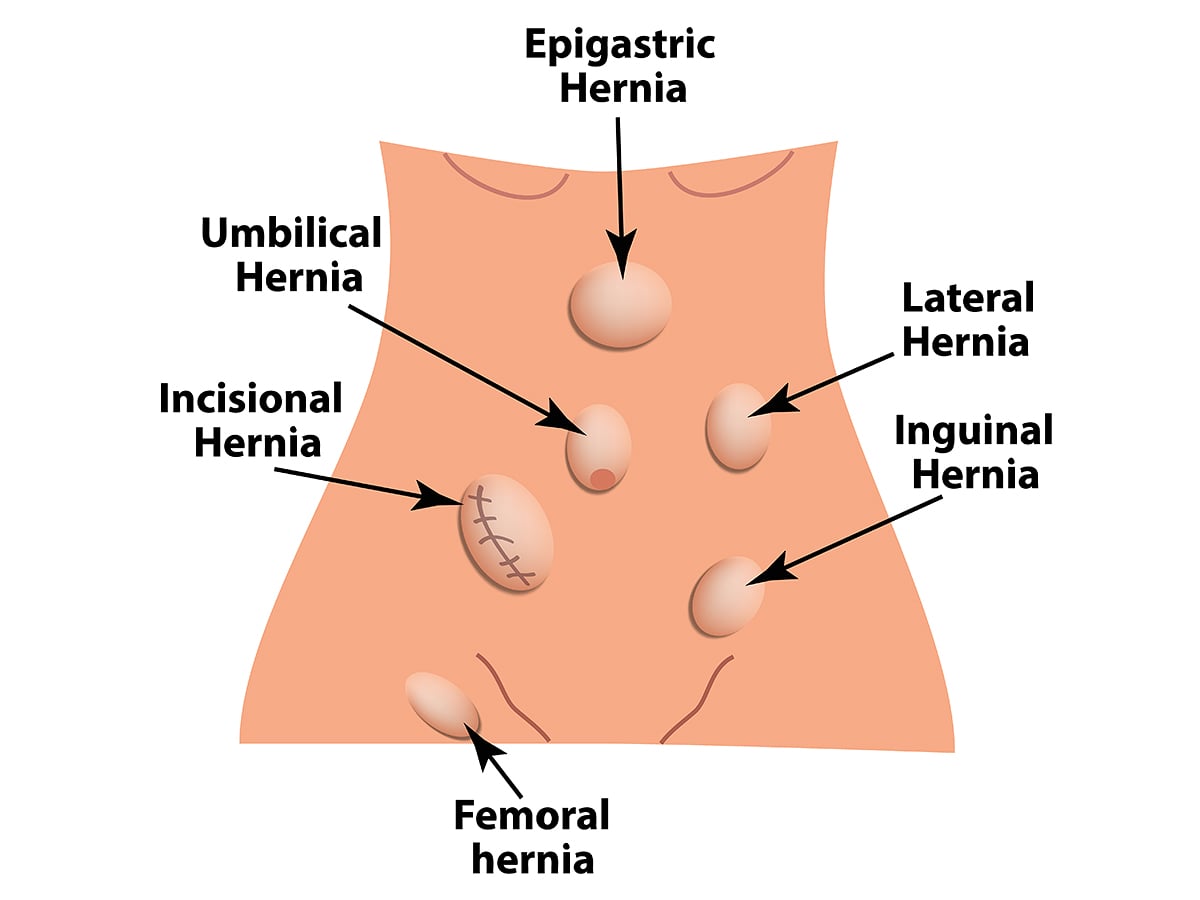Introduction
Indirect inguinal hernia
An indirect inguinal hernia is the most common type. It often occurs in premature births, before the inguinal canal becomes closed off. Men are more commonly affected than women and it can occur at any stage of our life.
Direct inguinal hernia
It is more common in adults and appears as a direct bulge of fat or a bowel loop through a weakness in the groin region.
Incarcerated inguinal hernia
Hernias are usually reducible but when some tissues are entrapped in the hernia, it is called incarcerated.
Strangulated inguinal hernia
More seriously, a portion of intestines can get very stuck in the hernia and gradually it loses its blood supply, hence the name [strangulated]. Strangulated hernias are life-threatening and require emergency medical care.
Indications
- Symptomatic Hernia.
- Painful incarcerated lump.
- Strangulated Hernia.
Preoperative Instructions
- Smoking cessation 6 weeks before operation.
- Reduce 10% of total body weight in obese patients.
- Treat infections.
- Good exercise.
Procedure
Open hernia repair
This is the traditional method of hernia repair and it is performed less commonly nowadays. It involves making a cut over the groin or the femoral hernia area to reduce the hernia and insert a synthetic mesh to reinforce the hernia defect and the mesh is usually fixed by sutures or clips.
Laparoscopic inguinal or femoral hernia repair
There are two types of repair:
TAPP (transabdominal preperitoneal) repair
a small incision is made bellow the navel. A port is inserted through the incision and the abdomen is filled with gas. A camera is then inserted through the port., which allows your surgeon to view the internal organs clearly. Two more incisions are made near the navel to introduce the surgical instruments. The peritoneum (a membrane that lines the abdominal cavity) is cut and the hernia sac is removed carefully. Next step is to cover the defect with a mesh and to close the peritoneum on top of it. The disadvantage of the TAPP procedure is it can cause injury to the adjacent abdominal organs. The advantage is that it can be performed on patients with previous lower midline surgery.
TEP (totally extraperitoneal) repair
The space between the peritoneum and the abdominal wall is lifted by inflating a dissecting balloon. The hernial sac is then exposed and repositioned and the hernia defect is covered with a synthetic mesh. The incisions are then closed with sutures. The mesh slowly gets incorporated with the tissues of the abdominal wall. The advantage of a TEP procedure is that it prevents the risk associated with damage to the internal organs as it is performed outside of the peritoneum. It cannot be done if there are previous multiple lower abdominal operations.
Postoperative Instructions
- Walking in encouraged as soon as possible to enhance recovery.
- Pain management.
- Avoid heavy weight pushing, pulling and lifting for a few weeks.
- Recurrent hernias can be prevented by losing weight if you are overweight, avoiding constipation, using correct lifting techniques and exercising regularly.
Risks and Complications
- Groin pain due to nerve injury.
- Infection at the incision site or mesh.
- Blood or fluid accumulation.
- Urinary retention.
- Recurrence of the hernia.





